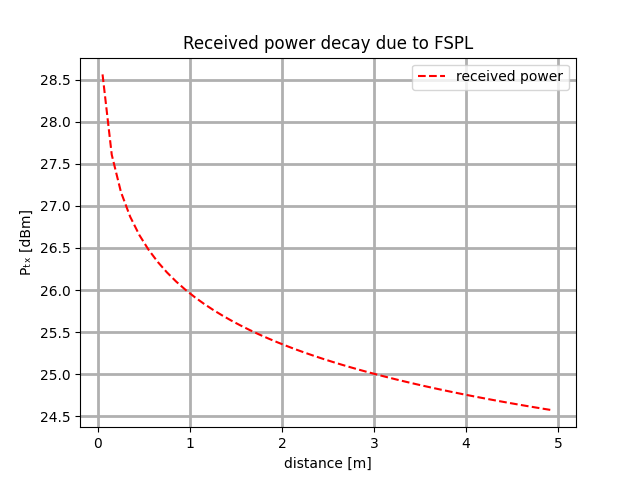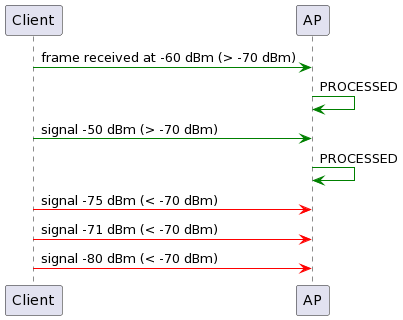Introduction to RX-SOP Configuration
Mon 01 May 2023 by Gioacchino CastorioThe Cisco Receiver Start of Packet Detection Threshold (RX-SOP) is a feature available on a multitude of enterprise access points, but experience taught me junior wireless engineers often misunderstand it.
In a sentence, the RX-SOP configuration declares the Wi-Fi power required for an access point to pick up signals, demodulation and then start decoding the physical layer protocol data unit (PPDU). This definition begs the question: why is such a feature required? Having a clear picture of how signal decay over distance is necessary to understand the implications of RX-SOP.
RF propagation refresher
We call an "isotropic radiator" an intentional radiator (IR) with no spatial dimensions (i.e. a dot) in the infinite void, emitting a wave signal of amplitude P(tx) in all directions. This entity is, of course, ideal, and it cannot be implemented in real life, but it will help us describe the behaviour of radiation moving through space.
A receiver at a distance d for the IR would see a different power level strictly less than P(tx), as the transmitted amount spreads to all directions; we can name the received power P(rx). In the case of an isotropic IR, we can easily compute P(rx) as the power spreads over a spherical wavefront. The power density I at a distance d on a punctiform section of the sphere is defined as follows:

In other words, the value "I" represents how the transmitted power distributes in a point at a distance d from the IR. It also lets us compute how much power P(rx) can be captured by a punctiform section of the receiving antenna.
Multiplying I by the effective area of the antenna will give us the total received power. The effective area depends on the directivity of the receiving antenna in general. However, when the receiver is far away from the transmitter (at least two or three times the wavelength lambda), it can be proven that:


RX-SOP operations
Having a clearer picture of the harshness of the RF environment, the receiver needs to detect between actual signals, which intensity may be comparable to a whisper in a noisy environment. This is when RX-SOP comes into play.
There is a power level called "sensitivity," which is the signal strength (expressed in dBm) of the weakest signal that the AP can distinguish from the background noise and process successfully. RX-SOP does not alter the sensitivity of your access point. On the other hand, changing the RX-SOP level forces the AP to actively ignore signals below a specific power in dBm. For instance, Cisco Meraki APs use -95 dBm by default when enabled on the Dashboard.

The described concept may sound familiar to those of you who are amateur radio operators, as this is a form of "carrier squelch", i.e. suppressing the receiver output if the input signal is not strong enough. You can see the effects of RX-SOP muting when the level is set to -70 dBm:

Final remarks
Altering the default value of RX-SOP is a risky matter leading to unexpected behaviours and interruption of the wireless service if you do not know what you are trying to accomplish and you do not have a clear picture of the mathematics behind signal propagation. In general, RX-SOP should not be used without following a well-thought design, followed by validation and tuning after the deployment in high-density environments with many clients (e.g. auditoriums, stadiums).
tl;dr -- never shoot off the hip when using RX-SOP, do your homework with the design, and consider first decreasing power to reduce cell sizes instead.
Bibliography
- "High Density Experience (HDX) Deployment Guide, Release 8.0." Cisco, Jun. 2015, https://bit.ly/3oTelUe. Accessed 30 Apr. 2023.
- "Free-space Path Loss." Scholarly Community Encyclopedia, Oct. 2022, https://bit.ly/40WJMdj. Accessed 30 Apr. 2023.
- "Receive Start of Packet (RX-SOP)." Cisco Meraki, Oct. 2020, https://bit.ly/41R9xxa. Accessed 30 Apr. 2023.